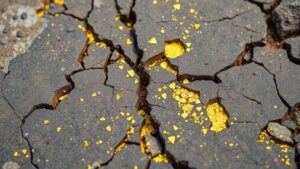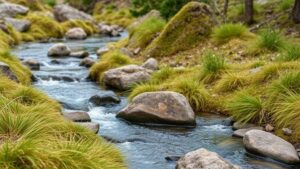How to Recognize Gold Indicators in Weathered Bedrock
How to Recognize Gold Indicators in Weathered Bedrock
The identification of potential gold indicators in weathered bedrock is a critical skill for geologists, prospectors, and hobbyists alike. While it may seem daunting at first, understanding the characteristics of gold-bearing formations can greatly enhance the chances of discovering valuable deposits. This article delves into the prominent indicators of gold presence in weathered bedrock, providing clarity and actionable insights.
Understanding Weathered Bedrock
Weathered bedrock refers to the upper layers of the earths crust that have undergone physical and chemical changes due to environmental factors. This process often results in distinct features that can hold vital clues for gold prospecting. Recognizing these features can aid in pinpointing areas with higher concentrations of gold.
Key Gold Indicator Features
Several geological features are commonly associated with the presence of gold. Understanding these indicators can significantly assist in identifying promising locations for exploration:
- Quartz Veins: Quartz veins often signal the presence of gold, especially if they are rich in sulfide minerals. e veins are formed from hydrothermal processes that can concentrate gold within.);
- Iron Staining: The presence of iron oxides, typically appearing as red or yellow stains, suggests geological activity conducive to gold deposition, often seen in areas rich in pyrite.
- Alteration Zones: Areas where the rock has changed color or texture due to hydrothermal activity often indicate a conducive environment for gold mineralization.
- Favorable Rock Types: Certain types of bedrock, particularly metamorphic rocks such as schist and gneiss, are frequently associated with gold deposits due to their formation and mineral composition.
Understanding Geological Context
The geological setting provides critical context for where gold may be found. Understanding the processes that lead to gold formation can help in exploration:
- Subduction Zones: Gold is often found in regions where tectonic plates converge, particularly in volcanic arcs.
- Alluvial Deposits: Erosion from weathered bedrock can transport gold particles into stream beds, creating alluvial deposits that can be indicators of upstream gold sources.
Technical Analysis and Field Techniques
Beyond visual indicators, employing various technical analysis methods can enhance gold exploration:
- Geochemical Sampling: Collecting soil and rock samples for laboratory analysis can ascertain the presence of trace gold.
- Geophysical Surveys: Techniques such as resistivity and magnetic surveys can detect mineral anomalies believed to be associated with gold deposits.
Real-World Case Studies
Case studies can provide valuable insights into effective indicators for locating gold:
- Mother Lode Gold Rush: In Californias Sierra Nevada, prospectors identified quartz veins in the regions geology, resulting in the discovery of substantial gold deposits.
- Kalgoorlie, Australia: The Super Pit gold mine features extensive alteration zones that led to some of the largest gold finds in history, underscoring the importance of geological features in identification.
Summary and Takeaways
Recognizing gold indicators in weathered bedrock involves a keen understanding of geological features and context. Key indicators such as quartz veins, iron staining, and alteration zones are essential markers of potential gold deposits. Utilizing both field techniques and technological analyses can improve the accuracy of gold prospecting endeavors.
The pursuit of gold requires patience and a solid understanding of geological principles. Employing the methods outlined in this article can not only streamline the identification process but also lead to successful mining ventures. Remember to approach each potential site with analytical scrutiny, as gold may often be hidden beneath layers of complexity.



